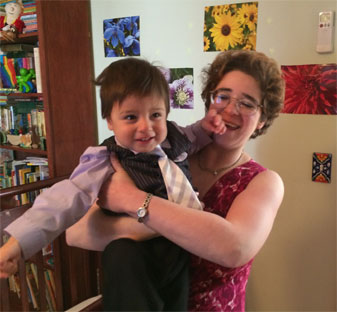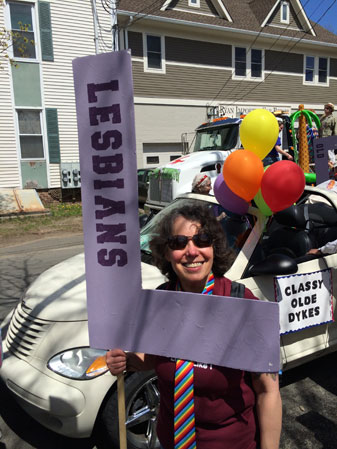The NY Times, the New Republic, and a slew of feminist blogs have recently been debating whether it’s appropriate for educators to put trigger warnings about potentially traumatic material on their syllabus. Not surprisingly, the mainstream media has taken the tack that students should expect to be challenged and disquieted by new ideas in the classroom, not shielded from the upsetting facts of life. It’s hard not to see a gendered value system behind this attitude, in which students’ dispassionate intellect (male) reins in their emotional reactions (female) so they can “properly” analyze horrific topics.
Jacqui Shine’s xoJane piece “What We Talk About When We Talk About Trigger Warnings” should be everybody’s starting point for required reading. Shine myth-busts the nasty stereotypes about survivors that recirculate like a bad penny whenever the topic comes up. I’ll post a short excerpt below, then share some personal memories and suggestions based on my time in academia.
Shine writes:
…Among the assumptions that come up and go unchecked are that trauma survivors are the ones asking for trigger warnings to be broadly applied in the first place and that, whether or not they are, asking for consideration means that there’s an imminent threat of a culture war-style takeover by a cabal of survivors who want to curtail our civil liberties or the exchange of ideas or the free expression of artists. (Honestly, it escaped my notice that we’re living in a world that slavishly caters to the needs of trauma survivors. If someone had told me, I would have made a point of enjoying it more!)
I’m also baffled by this assumption that trigger warnings are meant to prevent us from having to see or feel anything difficult–that the only way one responds to a trigger is by falling apart. Being triggered doesn’t mean you fall apart or are overcome by stereotypically feminized hysterics. Trauma responses can include a huge range of reactions, including physical symptoms like headaches, stomachaches, and heart palpitations and emotional ones, like anxiety or numbness. Sometimes being triggered looks like getting really quiet and sitting through something until you can get somewhere safe to take care of yourself. Sometimes it looks like someone going on as though nothing has happened at all and then having a really terrible nightmare that night.
Likewise, I’m not sure why a trigger warning has to imply censoring someone or stopping something. A “warning” is just that, and if you know what to expect–that you’re about to see something upsetting–you can plan in advance how you’ll handle it and how you’ll get through it. And we often warn people when they are about to see things that might be disturbing, whether we know them to be trauma survivors or not…
The following is just my personal perspective. I don’t make any claim for its universality. I completely support professors and students who have found that TWs make their classroom environment healthier. But I would hate to see the conversation start and end there, because the real issue is survivors’ right to an accessible education, not the merits of one particular access ramp. We need to experiment with a wide range of strategies for different situations.
Would TWs have improved my experience in academia? On what kind of material? I can’t imagine it, because I’m so different now, and my triggers in those days were more global than content-specific. I mean, as far as I’m concerned, every university should have “TW for bullshit and abuse of power” emblazoned above their entrance gates.
From early childhood to two years after I graduated law school, I was living in an abusive home. Currently, my life is fantastically psycho-free. Yet I find myself much more triggered by specific media content than I was then. I don’t know why.
I have a huge collection of horror fiction that I no longer read. More than half of the literary fiction that I pick up makes me feel gross inside because the author doesn’t seem to recognize how unhealthy his characters are, or that their deluded condition isn’t inevitable. I’m more quickly overstimulated by rapid-paced violent action in movies (though special effects have also become much more overpowering in the past two decades). With my feminist 3-D glasses on, I become dizzy watching romantic comedies because I see that the protagonists are nothing but stalkers and wounded childen. As for theology, once my favorite genre, a lot of it gives me a headache because I encounter chilly abstractions where empathy and personal narrative would be more relevant.
All of this is to say that it’s hard to imagine how TWs would have helped me in high school, college, or law school. I was too numbed-out to be triggered!
Seriously, though, I think I managed all right despite my raw mental state in those days because of two factors: I could predict (from the course topic or the book’s reputation) what kind of upsetting material a book might address, and I was smart enough to get decent grades despite not reading all of it. (Heck, I boycotted entire novels in senior year of high school because I didn’t approve of stream-of-consciousness–bite me, Andrey Bely!–and Mr. Everdell still passed me. Talk about being coddled.)
An example of successful trigger-management from my law school career: I chose to take an elective seminar called “Law and Politics of Pornography”. One of the required books consisted of scene-by-scene descriptions of numerous adult films, grouped thematically by chapter. I think this book, which was actually somewhat boring, was an excellent choice on the part of the professor, because it gave us a working knowledge of what these films depicted, in a format that wouldn’t overwhelm us sensorily. I’ve always feared mental contamination by images merging sex with violence. The author considerately grouped such films in the S&M chapter, which I pretty much skipped over. The chapter title was a sufficient TW for me.
Sensitive topics become show-stopping triggers because of surprise and sensory intensity. TWs developed to help people manage the unpredictable flood of data on the Internet. When I pick up a textbook on 20th-century history, I expect to come across pictures of Hiroshima victims and dead soldiers, and I’m mentally prepared. When I scroll down my Facebook wall, and those same images pop up between LOLcats and baby pictures, I’m triggered. I could be forced to see something horrible at any moment, from any quarter; there’s no refuge. This panicked conclusion shuts down the mind, making the viewer afraid to explore any media that isn’t completely predictable. Hmm, might the explosion of random, agitating images in every TV commercial break (sex! guns! speeding cars! insults! drunken frogs!) have some connection to America’s closed-minded and polarized politics?
Similarly, TWs on blogs perform the same function as book cover blurbs and reviews, a quick heads-up about content for readers who are unfamiliar with the author’s preoccupations. The sheer volume of writing by unknown authors on the Internet, far more than in your average bookstore, means that readers are taking a risk every time they navigate to a new page. And isn’t that what education is all about–guiding people to risk discovering new ideas, by giving them the tools to orient themselves in an unfamiliar place? So don’t waste my time with your free-speech arguments against TWs.
In the debate over
TWs, we need to distinguish between challenging ideas and overpowering experiences. The former are integral to education, the latter are not.
The very fact that we’re discussing triggers in academia is a radical, positive step. As I’ve said in my “Survivors in Church” posts, trauma awareness is an often-overlooked component of accessibility and diversity training. Finally, we’re acknowledging that students are not floating heads but affective human beings who feel personally implicated in the narratives they read in class.
However, a trauma-management tool borrowed from the Internet may not be as helpful in the classroom. Rather than telling students what they probably already know (“Romeo & Juliet: TW for suicide”), educators should watch out for unnecessarily traumatizing material in their curriculum choices. It’s the difference between posting a sign “Warning: Hazardous Waste” versus not dumping the damn thing in the first place. Which do you think is more effective?
Does this mean avoiding all painful topics? Certainly not. Teachers already balance such factors when important texts contain racist ideas or slurs. For example, schools assign Huckleberry Finn despite its controversial use of the N-word, because the value of learning about American racism outweighs the pain of hearing the slur. However, it would be irresponsible and unnecessary to re-enact scenes from Huck where one student would have to call another student “N-word”. Verbal abuse is not a legitimate teaching tool. That’s what I mean about challenging ideas versus overpowering experiences.
How might this work for other common triggers? Well, if you’re an English teacher choosing between two novels that both fit the course requirements, consider assigning the one without the graphic rape scene. Or assign the one where rape is presented in a context that facilitates critical discussion of rape culture, rather than one that gratuitously eroticizes the assault or minimizes its moral significance.
If you’re a history teacher, have a presumption in favor of low-stimulation media when studying violent events (e.g. written descriptions as opposed to videos). Show violent images sparingly to make a point that couldn’t be made otherwise. Don’t fall into “Operation Rescue” tactics of using bloody photos to shock students into paying attention. Pro-actively acknowledge the students’ need for self-care and normalize their feelings of distress instead of projecting an ideal of emotional detachment. Students who are allowed to empathize and grieve about atrocities will learn the moral lessons of history better than ones who dissociate in the name of objectivity.
Whatever your subject area, don’t radiate contempt for your students’ foundational beliefs and intellectual defenses. Why was I an aesthetic reactionary in high school, turning up my nose at Mallarmé and Ezra Pound? Because I was unconsciously triggered by chaos, be it moral relativism, absurdist art, or an undisciplined classroom. I couldn’t get perspective on this in an academic culture that assumed that all students were safe and complacent, and that the teachers’ job was to epater le bourgeois. My first-year Intro to Legal Thought professor spent our last day of class haranguing us for our cowardice. He’d been giving us bombs to smash the system, he raved, but we’d let them all fizzle out. But some of us come to education seeking a bomb shelter from our shell-shocked lives. We were already born in the ruins; we crave a vision of order and harmony, and the tools to build it.
TWs alone won’t make academia survivor-friendly, any more than campus speech codes ended racism. A deeper values-shift is needed. But anything that breaks the silence around trauma is a good start.

